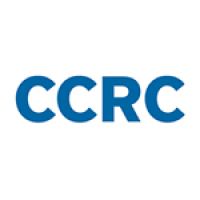By James Jacobs, Maria Cormier, and Thomas Brock
Many adults who turn to postsecondary education as a route to better jobs and higher earnings are attracted to short-term (less than one semester) workforce training programs. At present, students in such programs are not eligible for Pell Grants to fund their education. Permitting these programs access to Pell funding can be an appropriate use of federal funds, but short-term Pell must be designed carefully to minimize the risk of wasted taxpayer dollars and disappointing outcomes in the labor market.
Currently, Federal Pell Grants, which will provide up to $6,495 for low-income students in the 2021-22 academic year, can be used for programs totaling at least 600 hours over 15 weeks. Allowing Pell Grants for shorter-term programs is controversial because the value of short-term programs in the labor market is uneven. On the one hand, research suggests that short-term programs in technical fields lead to improvements in earnings for adults with high school diplomas but no postsecondary education. On the other hand, certificates in culinary arts, cosmetology, and general education rarely pay off, and noncredit programs generally produce poorer outcomes than programs that count toward degrees. Opponents of expanding short-term Pell argue it could also exacerbate equity gaps.
Late last year, the Institute of Education Sciences released findings from two experiments to test the effects of expanding Pell Grants for short-term training programs to students who were unemployed or underemployed and met the income criteria for Pell Grant eligibility. One of the experiments targeted students who had bachelor’s degrees; the other targeted students who did not. Both studies found that short-term Pell Grants led to significant, positive increases in enrollment in and completion of eligible training programs. The studies did not measure effects on employment and earnings.
Based on available evidence, we believe low-income adults seeking postsecondary skills to enter or advance in the labor market should have access to Pell Grants. However, the short-term programs eligible for Pell Grants should lead to better jobs and build to a higher-level credential, so that they are an effective use of student and taxpayer dollars. We suggest several guardrails to increase the likelihood of successful educational and employment outcomes for participants.
Providers of short-term programs should be accredited institutions eligible for Title IV funds. In particular, we would limit funding to public and private nonprofit colleges and universities. A growing body of research by CCRC and others shows limited or even negative economic returns to students who pursue training in for-profit institutions.
The availability of Pell Grants for short-term programs should be capped at each institution. The utilization of Pell Grants for short-term training should not conflict with the primary mission of Pell, which is to support low-income students who are seeking a postsecondary degree. A ceiling on the use of Pell funds for short-term programs should be established until more data are available on the value of these programs. Too generous a program might create an incentive for unscrupulous providers to start and expand short-term programs not warranted by labor market demand. A tight cap will create an incentive for colleges to offer appropriate programs.
All short-term programs that qualify for Pell Grants should be connected to a degree or credit-bearing program. Not all eligible programs need to be offered for credit, but institutions planning to make Pell Grants available for a short-term program should be required to map out the alignment and transferability of the program to available career pathways in that field and create a mechanism for converting the short-term courses into institutional credits.
Embedding short-term programs within credit and degree-granting programs creates a bridge for students who choose to continue their education, either right away or after working in their field. It also would subject short-term programs to the institutional course evaluation process, which may help ensure quality.
Students enrolling in short-term programs with Pell funding should have full access to advising and support resources. Too often, noncredit programs are siloed on community college campuses so that noncredit students do not have the same access to facilities and services as for-credit students. Students in short-term programs should have the right to all counseling, assessment, and student support services that the institution offers, including career advising that might lead more participants to plan for further education.
The U.S. Department of Education should establish guidelines and procedures for reporting on outcomes for students who receive Pell Grants for short-term programs, including requiring that data be disaggregated by age, gender, and race/ethnicity. Better data will allow both institutions and the federal government to know whether the short-term programs funded by Pell are enrolling students equitably and leading to worthwhile employment and additional education for all groups. Institutions should report this data annually and use it to determine if Pell funds for short-term courses enhance the institution’s mission. Mechanisms should be in place to discontinue funding for programs that do not lead to employment and higher wages.
Adult workers deserve support as they work to develop and update their skills for the current labor market, but we need to ensure that federal dollars are not supporting dead-end programs that do not help workers advance.
James Jacobs is a research affiliate at CCRC, Maria Cormier is a senior research associate at CCRC, and Thomas Brock is the director of CCRC.





